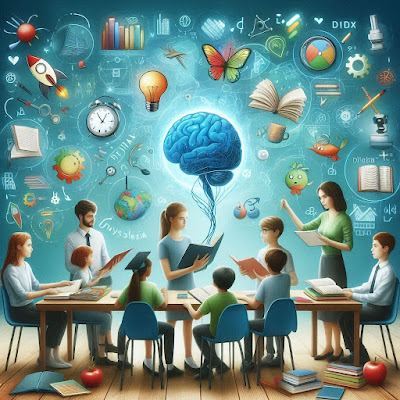Understanding Learning Disorders: A Closer Look at Dyslexia
Learning is a lifelong journey, but for some individuals, the path is filled with unique challenges. Learning disorders, often misunderstood or misidentified, can significantly impact a person’s ability to absorb, process, and communicate information. One of the most common and widely studied of these disorders is dyslexia.
What Are Learning Disorders?
Learning disorders are neurological conditions that affect the brain’s ability to receive, process, store, and respond to information. These challenges aren't indicative of a person’s intelligence. In fact, many individuals with learning disorders are highly intelligent and creative, but they require different strategies to learn effectively.
The most recognized learning disorders include:
-
Dyslexia (difficulty with reading and language processing)
-
Dyscalculia (difficulty with math concepts)
-
Dysgraphia (difficulty with writing)
-
Auditory and Visual Processing Disorders
-
Nonverbal Learning Disabilities
Each disorder comes with its own set of challenges, and often, individuals may experience more than one.
What Is Dyslexia?
Dyslexia is a language-based learning disorder that primarily affects reading. It can also influence writing, spelling, and sometimes speech. People with dyslexia may have trouble recognizing words, reading fluently, and decoding letters and sounds. Importantly, dyslexia is not linked to intelligence—it’s about how the brain processes written and spoken language.
Common Signs of Dyslexia:
-
Difficulty reading at the expected level
-
Problems recognizing common words
-
Trouble with spelling and writing
-
Avoiding activities that involve reading
-
Slower reading and writing speed
In children, signs often become apparent once they start learning to read. Adults with undiagnosed dyslexia might struggle with reading comprehension or spelling in professional settings.
Causes and Diagnosis
Dyslexia is believed to be hereditary and is often seen in families. Brain imaging studies show that people with dyslexia use different parts of their brains when reading compared to those without the condition.
Diagnosis typically involves a team of professionals, including psychologists, speech therapists, and educational specialists. Early identification and intervention are key to managing the disorder effectively.
Living with Dyslexia
While dyslexia presents challenges, with the right support, individuals can thrive academically and professionally. Some strategies include:
-
Specialized instruction: Techniques like multisensory learning can help make reading more accessible.
-
Assistive technology: Tools such as audiobooks, speech-to-text software, and reading apps can bridge learning gaps.
-
Classroom accommodations: Extra time on tests, oral testing options, or alternative assignments can make a big difference.
-
Support and understanding: Encouragement from teachers, family, and peers can help build confidence and resilience.
Notable People with Dyslexia
Many successful individuals have dyslexia, proving that this condition doesn’t limit potential. Celebrities like Whoopi Goldberg, Steven Spielberg, and Richard Branson have spoken openly about their experiences with dyslexia, helping to reduce stigma and inspire others.
Final Thoughts
Learning disorders like dyslexia remind us that one size does not fit all when it comes to education. Everyone learns differently, and recognizing these differences is the first step toward inclusive, effective education. With awareness, early intervention, and continued support, people with dyslexia can lead fulfilling, successful lives.
Let’s celebrate diverse minds and ensure that no one is left behind simply because they learn in a different way.

Comments
Post a Comment